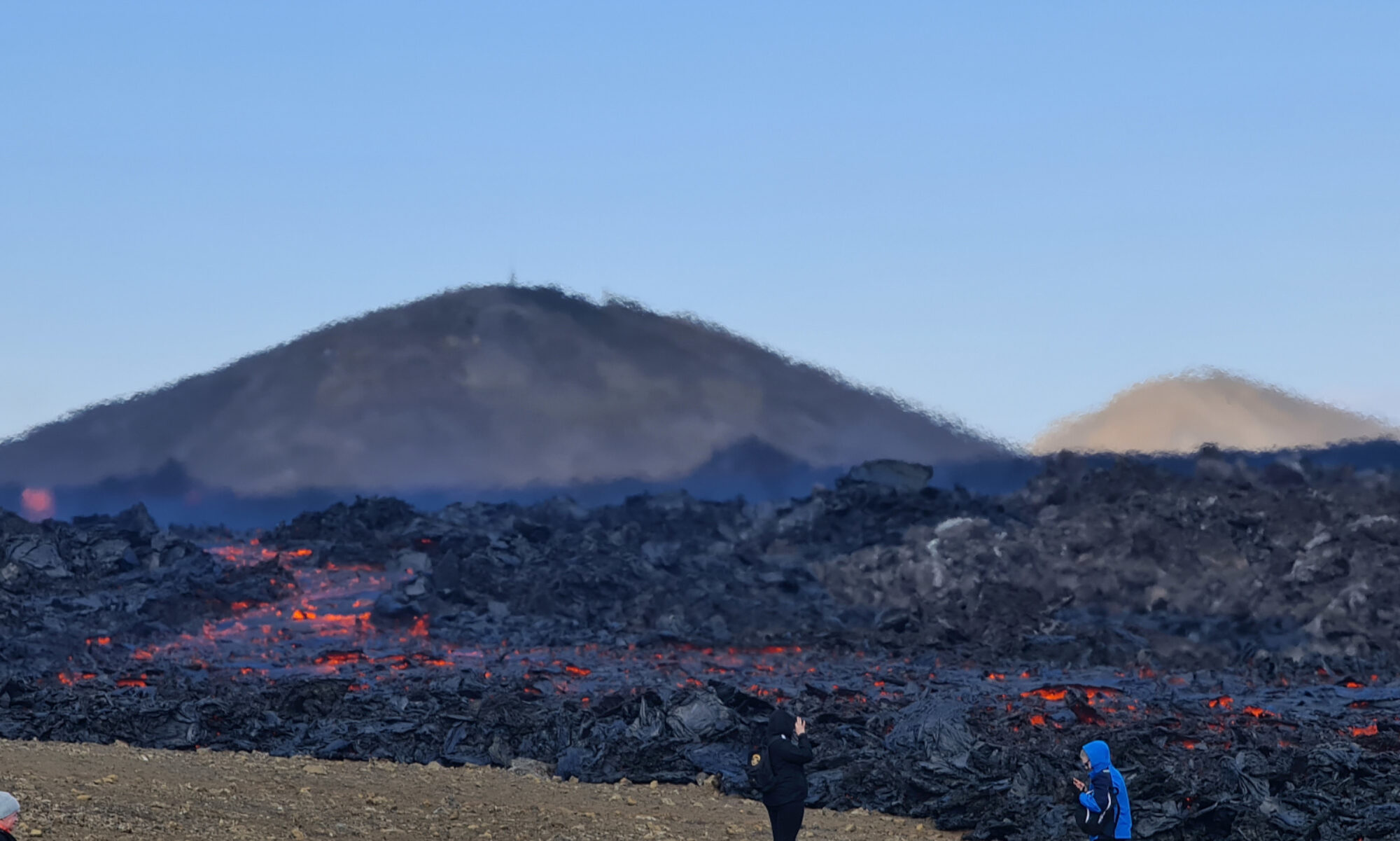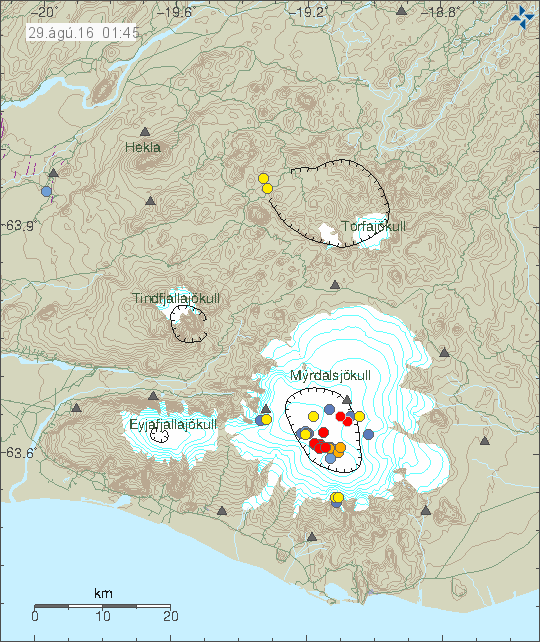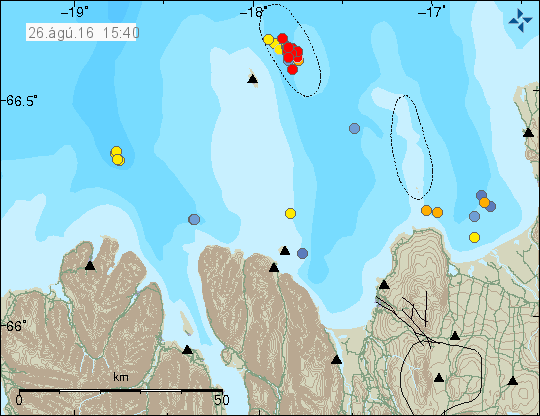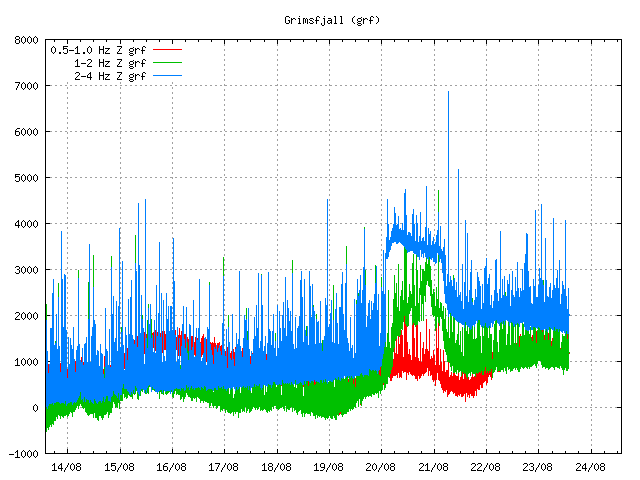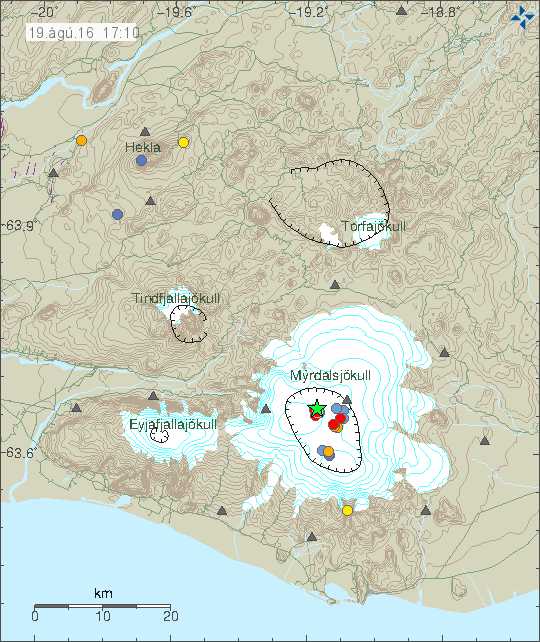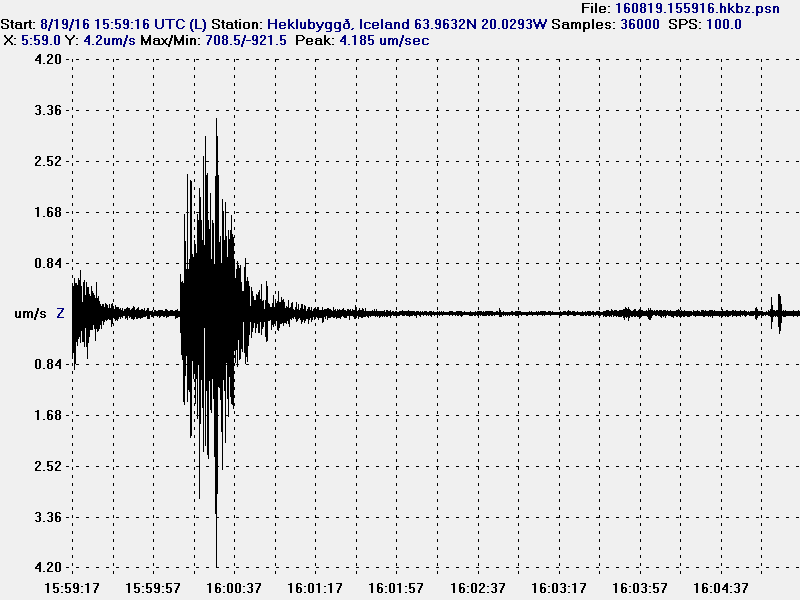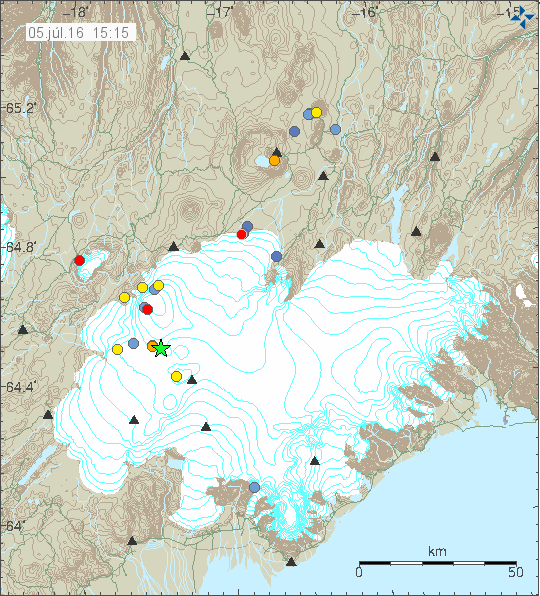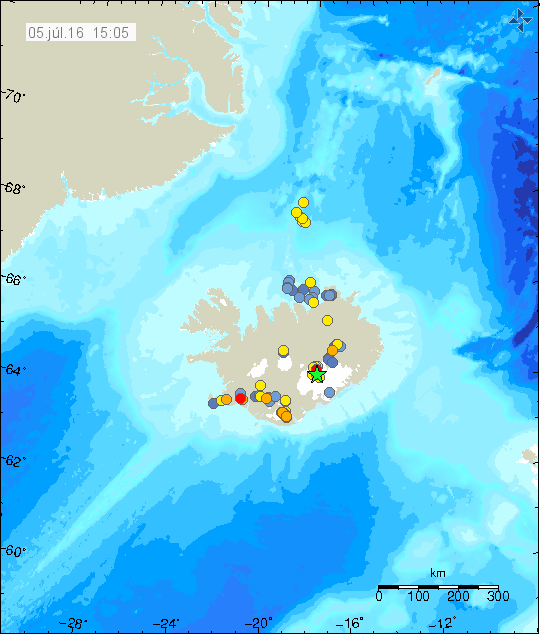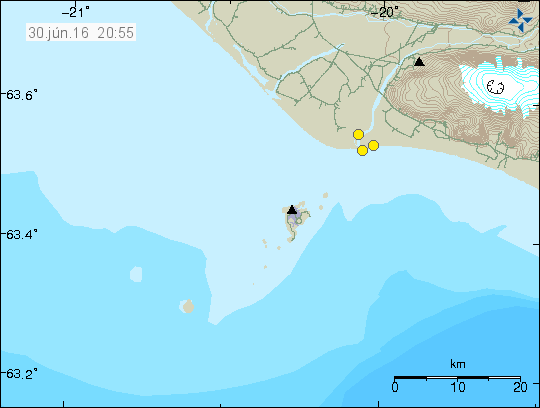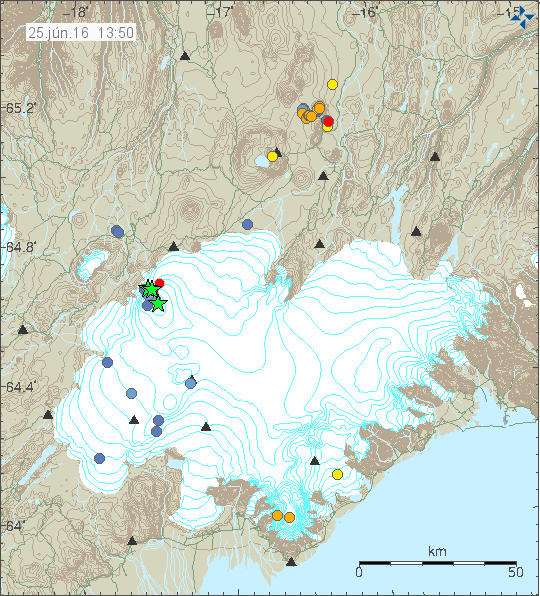This is not going to be a too long update about the activity in Katla volcano. Since I fear that this article might become outdated rather quickly.
Currently there is no eruption in Katla volcano. At the moment only earthquake activity has happened. Latest information shows that hydrothermal water has entered Múlakvísl glacier river from Mýrdalsjökull glacier and that is making the air nearby possibly toxic and dangerous. The two largest earthquakes had the magnitude of 4,5. One earthquake had the depth of 3,8 km while the one that happened 20 seconds later had the depth of 0,1 km. Other earthquakes had magnitude around 3,0 and above and below.
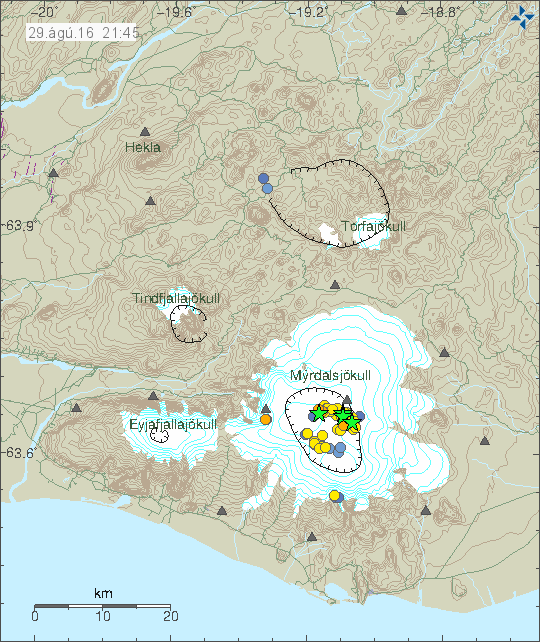
Green star show where earthquakes with magnitude above 3,0 took place in Katla volcano. Copyright of this image belongs to Iceland Met Office.
It is not know how and eruption starts in Katla volcano, since no historical recordings exist when last eruption took place in the year 1918. Making ideas on how an eruption in Katla volcano start mostly guesswork. Current earthquake activity is the strongest since 1977, in 1955 there was some strong earthquake activity but magnitude of those earthquakes is not known. It is my idea that Katla volcano erupts when a rift zone activity takes place in this area, since it is on the eastern volcano zone (EVZ) in Iceland, it is currently expanding south of Vestmanneyjar and American plate and Euroasian plate is around 1cm/year.
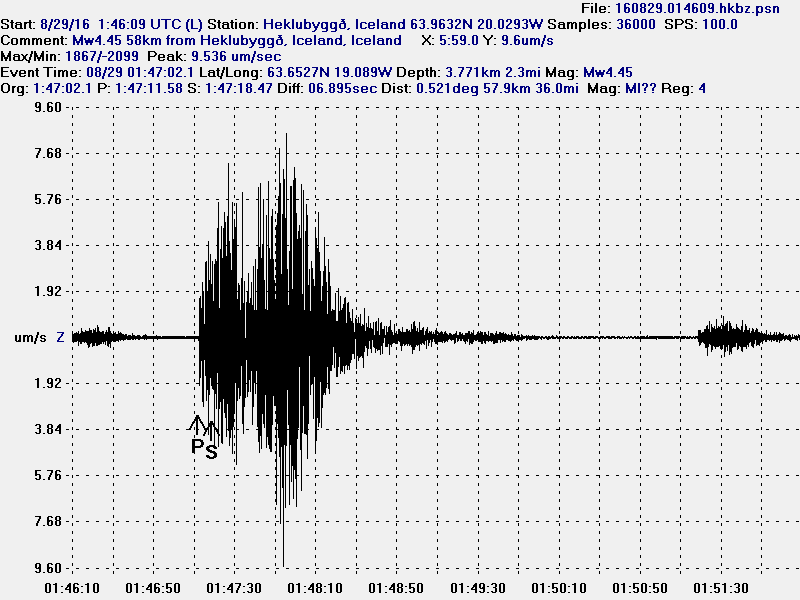
The main 4,5 earthquake in Katla volcano. This image clearly shows a long period earthquake. This is my station in Heklubyggð. This image is under CC Licence, please see CC Licence page for more details.
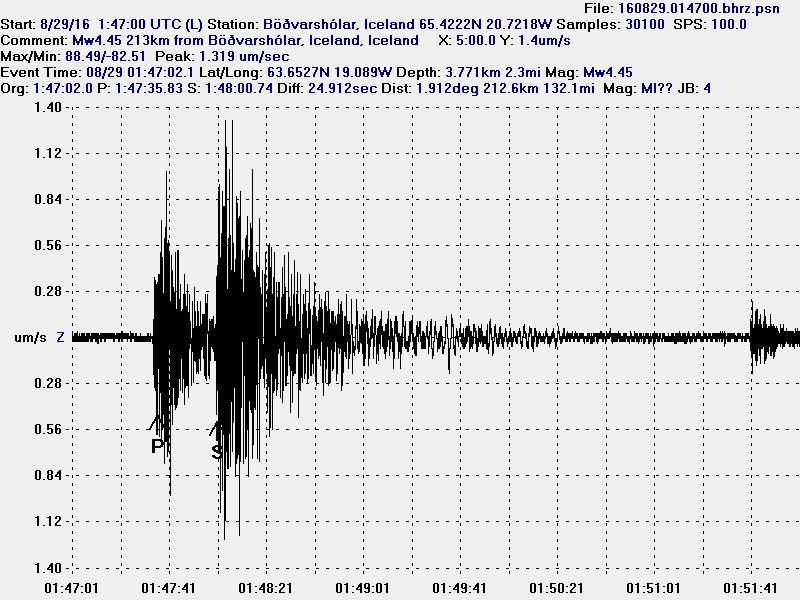
The main 4,5 earthquake as it appeared on my geophone in Böðvarshólar. The earthquake signal is clear. This image is under CC Licence, please see CC Licence page for more details.
It is difficult to know what happens now. The signs are not good, but Katla is an active volcano with regular eruption cycles so this is only matter of time now. As mentioned above, the reason is lack of data on how the eruption process starts in Katla volcano. All that can be done now is to wait and see what happens next.
